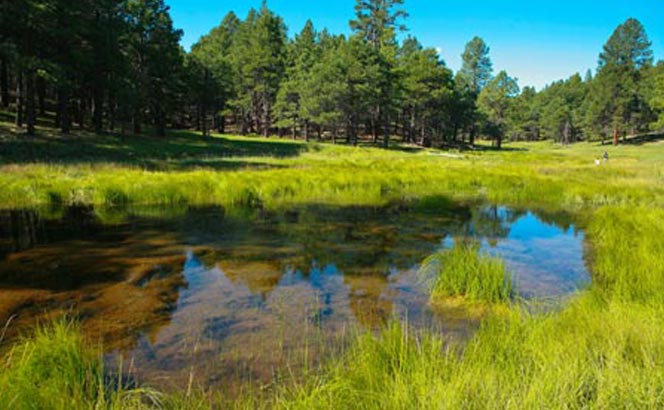At least in the case of Verde Valley, downstream irrigators are willing to pay for restoration of a forest they cannot see to preserve a resource that is currently free.
That was the conclusion reached by researchers from Northern Arizona University, who recently published their findings in Water Resources Research.
The interdisciplinary team, funded by a National Science Foundation grant, investigated the idea of whether water users would be willing to pay for water that flows into their irrigation ditches from forested areas upstream—if the payment funded restoration work that would keep the forests healthy.
“The water currently has no monetary value associated with it, so we wanted techniques to find its value and find funding mechanisms for supporting forest restoration,” said Abe Springer, professor in NAU’s School of Earth Sciences and Environmental Sustainability.
To do so involved background research by Wes Swaffar, then a graduate student at NAU, on models of payment for watershed services. Julie Mueller, assistant professor in the W. A. Franke College of Business and lead author of the study, then developed a statistical method of surveying irrigators and quantifying their responses.
The researchers found, somewhat to their surprise, that overall the irrigators were willing to pay for water that today entails only ditch maintenance costs.
“The general take-home point was that even though these people can’t see the forest where the restoration would be occurring, they really knew and understood the connection between upstream forested watersheds and what they get coming through their ditches every year,” said Swaffar, who has graduated and now works for the National Forest Foundation. “They would be willing to invest money to make sure that those services are maintained.”
Implications for forest restoration projects such as the Four Forest Restoration Initiative remain to be resolved, although Springer said that policy analysis will be covered in upcoming research papers. What that policy will need to address, he said, is how to establish an acceptable funding mechanism when the resource provider is the federal government.
“The challenge is, how do you collect payments from the beneficiaries of water and transfer them to the provider?” Springer said.




